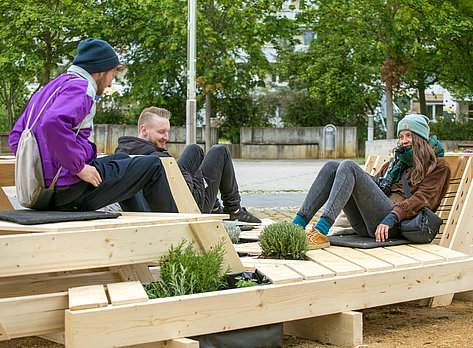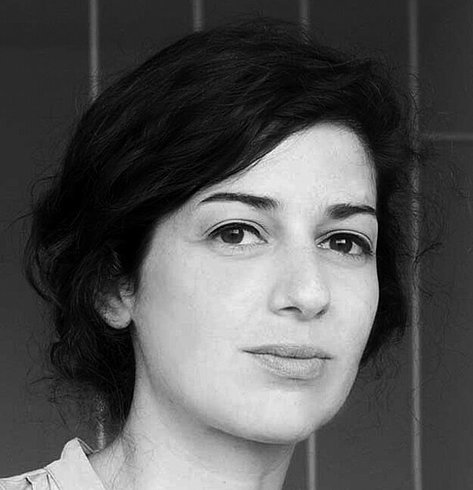Architectural Contest: From niche intervention to urban transformation
12 min readThe real-time architectural contest: 72 Hour Urban Action
The international teams of 12 participants each have 72 hours to create architecture at specific places in a city, which meets local challenges and gives some quality of life back to the residents. Here, amateurs meet experts, people encounter an urban environment and residents experience their neighbourhood in a totally novel way. The organisers Kerem Halbrecht, Gilly Karjevsky, Lukasz Lendzinski and Markus Nießner are confident that these encounters will make an impact. In Jena-Lobeda, Germany, where the festival took place at the beginning of May upon an invitation by the Municipality of Jena, the residents have already become fond of the architectures. Many of these are to remain in the neighbourhood. The following are 5 statements about an architectural project with an exceptional character.
When several different disciplines come together in teams with a common goal, separation is transformed into solidarity.
Language barriers, professional tunnel vision, technical jargon – there are many potential difficulties when heterogeneous teams cooperate. These can be overcome by contagious enthusiasm. The exceptional situation in 72 HUA releases positive energy. “There is a very special spirit prevailing during the festival, and being a part of it is inspiring. There is a reason we have so many repeat participants who gave all they had again in Jena”, Gilly Karjevsky confirms.
But people are also welded together when working on a common object. “The festival is an opportunity to test ideas in practice. In this way, language barriers and cultural differences lose their significance”, Kerem Halbrecht explains. “In Jena we came together to laugh, to build something, to eat and to work hard. This did not require a lot of discussion or a similar background, but only a common goal.”
When architects and designers encounter a city, they also see the potential and not just the status quo.
There are alternatives to every existing reality. Being aware of these means being able to take part in shaping the future. “Our task as architects and designers is to imagine what could be”, says Kerem Halbrecht. “But this does not mean that someone else would not be able to show just as much imagination.” During 72 HUA, the visions of amateurs and experts blend together.
On site, the organisation team tries to immerse itself deeply in urban neighbourhoods. “We wanted to understand architectural structures and the historical context in Jena, too”, explains Markus Nießner. So the team finds the places where architectures can fully exploit their potential for change. “During 72 HUA, it is possible to create prototypes from ideas in a very short time together with the people they are intended to serve“, says Kerem Halbrecht. This creates (or revives) an awareness that it is possible to effect changes even with limited resources. “Suburbs such as Jena-Lobeda are often reduced to their grey prefabricated high-rise image. With 72 HUA, we were able to demonstrate how much life there really is in this district”, Nießner notes with satisfaction.
When people encounter an urban environment, concepts for life are created, not just building of structures.
Someone who constructs a building in a city does not just want to change the city’s appearance. The life in and around it is always a part of the plan. “The installations created during 72 HUA are not the goal, but a pretext for dealing with social questions and the relationship residents have with their city.
We use architecture as a lens to see how people want to influence their environment”, Kerem Halbrecht explains. In Jena, a parking lot was transformed into a venue for neighbourhood meetings, a strip of gravel into a place for pausing, and a piece of lawn into a playground.
When an object meets its surrounding space, it influences the entire structure, not just the immediate neighbourhood.
The effect of a single building can change entire streets. “The installations from 72 HUA are actually of temporary character. They are impulse givers and stand for reclaimed public space”, Markus Nießner explains. But after their implementation, they frequently became a part of urban history.
“In Jena, a total of four installations have been upgraded for permanent use, two more are being taken care of by the neighbours and yet another two will stay for as long as they remain stable”, the organiser reports. A significant process: “When officials and residents decide to keep a given project, questions concerning the object’s identity, ownership, care and use must be resolved”, says Kerem Halbrecht.
“In this way, 72 HUA inspires changes in the material and immaterial reality beyond the limited scope of the festival.” In Jena-Lobeda, the pieces of architecture now invite passers-by to linger; they are an attraction and place for communication in one.
When a change prompts local residents to meet their familiar environment in a new way, new relationships suddenly develop.
Changes release energies. “72 HUA changes the residents’ perception. They develop a new, positive relationship with their suburb”, Gilly Karjevsky reports. “This is one of our goals. This is how they discover that they have the power to personally influence the place. We want to contribute to having change appreciated.”
In Jena, some relationships created by the festival last much longer than 72 hours. “For many neighbours and partners, 72 HUA was an abstract term, until 120 people started to build something during the nights. This kind of energy has an immediate effect. One neighbour told us that she spontaneously decided to stay up during 50 of the 72 hours to provide the teams with coffee and biscuits during the nights and to explain to passers-by what was going on”, reports Markus Nießner. “That brings people together. Two music institutions in the suburb of Lobeda also met each other for the first time through 72 HUA and now stage joint projects.” The festival and its installations have succeeded in creating entirely new relationships in old settings.
Invite 72 HUA to your city!
The organisation team looks forward to your invitation and will be glad to answer your questions about the project and its implementation:













